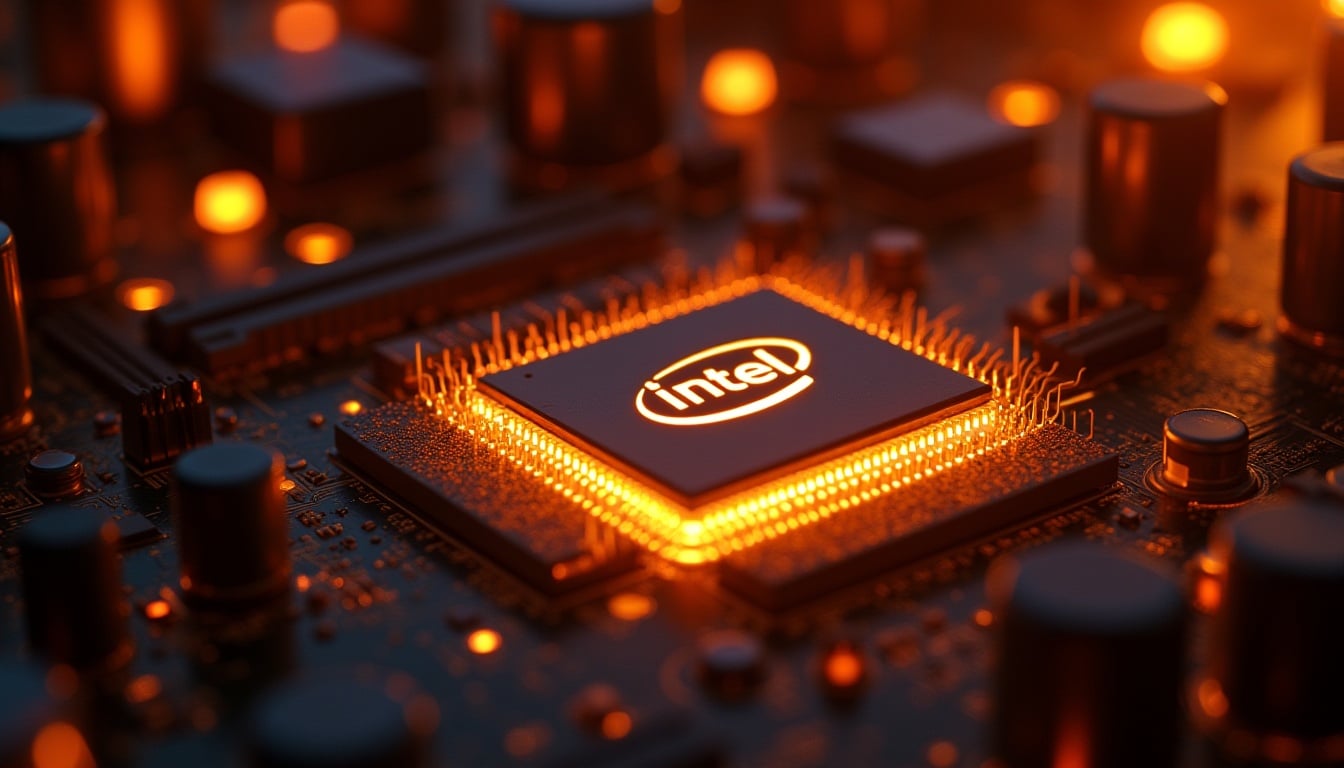The American semiconductor manufacturer Intel has once again been endorsed by financial analysts as a key player in the future of advanced chip design and manufacturing, especially in light of TSMC‘s dominance. According to Gus Richard, an analyst at Northland, Intel is “the only alternative to TSMC” in the race to lead next-generation integrated circuit manufacturing and packaging technologies.
The Intel 18A Process Approaches Commercial Viability
During the recent VLSI Symposium 2025, Intel confirmed that its new manufacturing process, Intel 18A—which will power the Panther Lake processors for consumers and the new Xeon Clearwater Forest servers based exclusively on E-Core cores—promises significant advancements:
- 30% more integration density compared to the Intel 3 process.
- 25% higher frequency at equal power consumption.
- 36% less energy consumption at the same frequency.
These figures put Intel very close to the performance promised by TSMC’s 2-nanometer node, which, according to the analyst, would place both companies “in the same technological zip code” by 2026.
Leadership in Advanced Packaging and Geopolitical Outlook
Beyond the manufacturing process, Richard emphasizes that Intel will be, alongside TSMC, a leader in advanced packaging, one of the keys to optimizing performance and energy consumption in complex architectures. He specifically refers to Intel’s potential evolution toward a foundry specialized in SiP (System-in-Package) packaging, capable of integrating multiple chips and interconnections within a single package.
This advancement would allow Intel to stand out not only as a silicon manufacturer but as a comprehensive provider of advanced solutions in an ecosystem where heterogeneous and 3D packaging is gaining prominence.
In a more speculative tone, the analyst introduces a geopolitical factor by warning that a potential escalation in East Asia, driven by a hypothetical Chinese offensive on Taiwan, could considerably elevate the strategic value of Intel as a safe, Western alternative to the vulnerability of the Asian supply chain.
Massive Investments in the U.S. with Arizona as the Epicenter
Intel is currently expanding its Fab 52 and Fab 62 facilities in Chandler, Arizona, while its rival TSMC is also building a plant in Phoenix. This concentration of investments in U.S. territory reflects the Western powers’ effort to relocate some advanced semiconductor production in response to global technological dependency risks.
Additionally, Michelle Johnston, Intel’s product director, confirmed at the BofA Global Tech Conference 2025 that the company has adopted a strict policy: it will not continue developing any product that does not promise at least a 50% operating margin, a clear gesture toward strategic streamlining and long-term profitability.
Intel vs. TSMC: A New Balance in Advanced Manufacturing?
Despite the ongoing challenges in its transformation process, the consensus among optimistic analysts like Richard is that Intel has the technology, execution capability, and necessary state support to seriously compete with TSMC in the coming years.
Its technological proximity, leadership in packaging, and strengthened manufacturing capacity in the U.S. could help regain the prominence Intel lost over the past decade and position it as a cornerstone in Western digital sovereignty.
The analyst’s current price target for Intel’s shares remains at $28, under a rating of “outperform,” reflecting confidence in the company’s recovery and leadership potential.
Technical Summary:
- Intel 18A: manufacturing node equivalent to 2nm.
- +30% density, +25% frequency, -36% consumption.
- Expected leadership in SiP packaging and 3D solutions.
- Major investments in factories in Arizona (Fab 52 and 62).
- Minimum required margin of 50% for new products.
- Increased strategic value amid tensions in Taiwan.
Intel is making a strong comeback in the post-nanometer era, ready to compete on all fronts: design, manufacturing, packaging, and technological geopolitics.
via: wccftech

